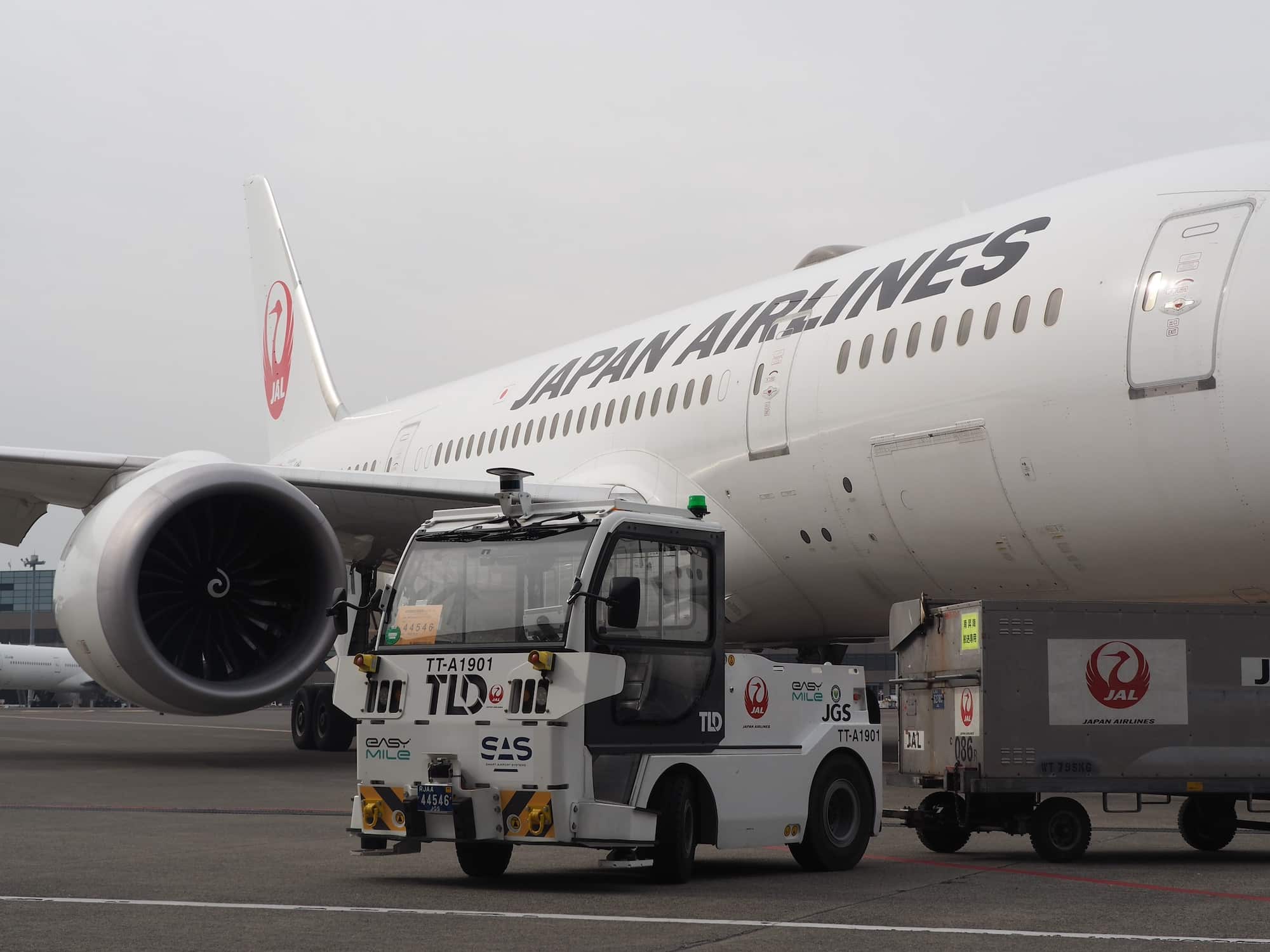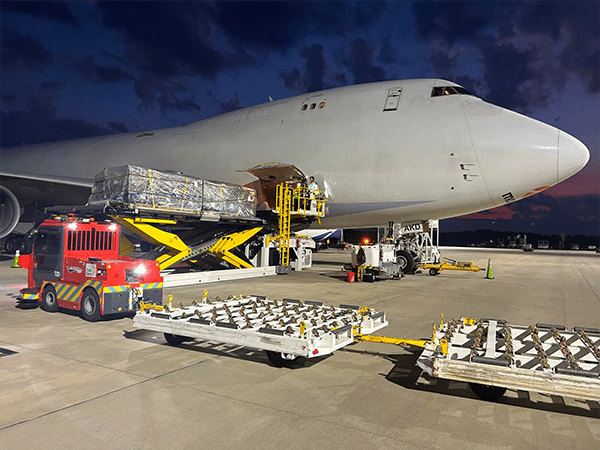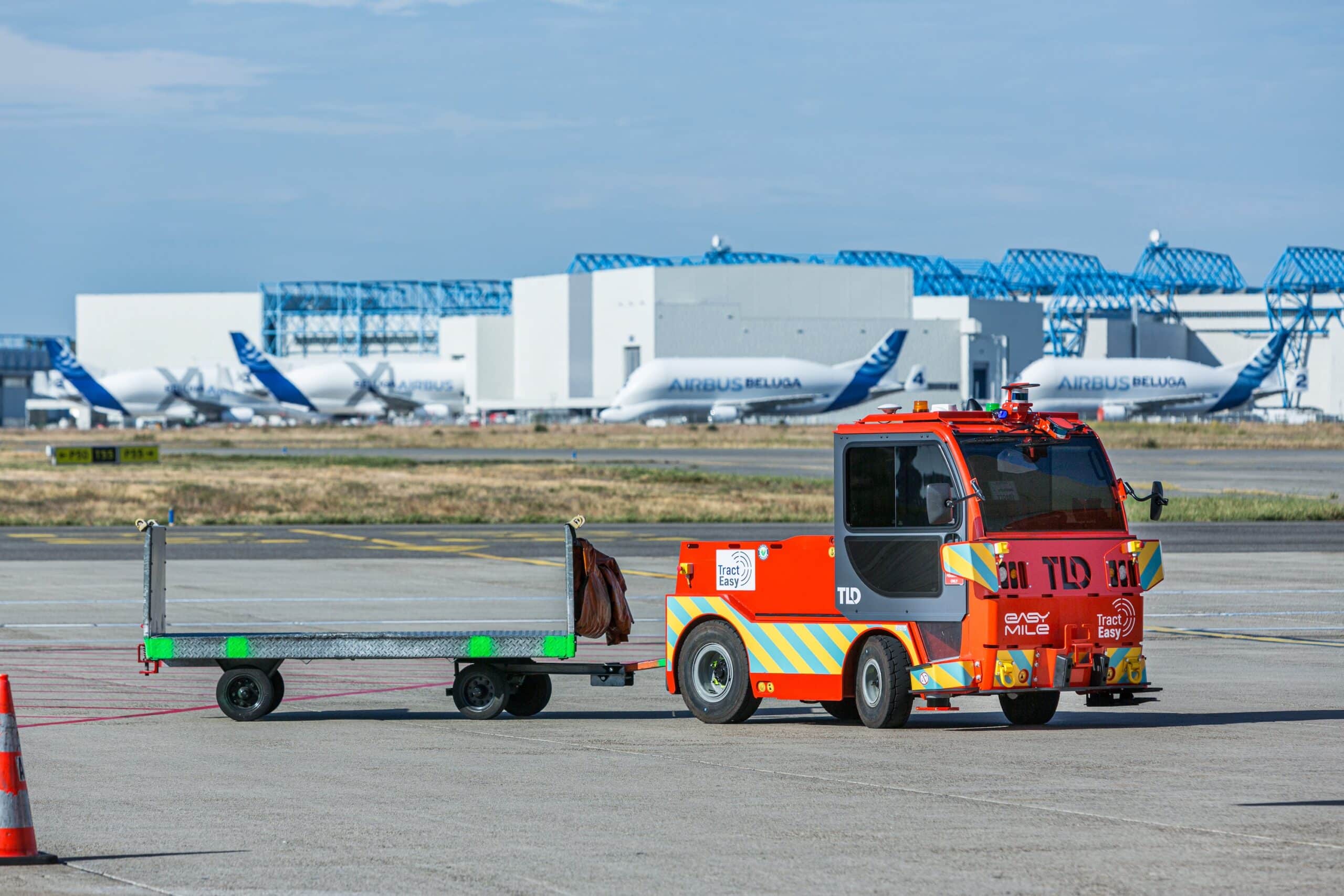As airports worldwide work toward stringent sustainability goals, many are adopting solutions aimed at reducing emissions and increasing operational efficiency. This shift includes a growing reliance on renewable energy sources and driverless ground support technology. In our latest blog, we examine how TractEasy’s autonomous vehicles (AVs) contribute to streamlined airport logistics, cost reduction, and the advancement of sustainable practices in aviation.
The future of autonomous vehicles in airports
Airports worldwide are embracing autonomous technologies, signaling a major role for AVs in the future of airport operations. This integration aligns seamlessly with the aviation industry’s broader sustainability goals. As we all know, many airports are investing in renewable energy sources, like solar, wind, and geothermal power, to support their operations. For instance, Frankfurt Airport’s large-scale solar panel system powers parts of its ground support equipment (GSE) fleet. Additionally, airports are turning to sustainable aviation fuels (SAF) for aircraft operations. By combining SAF use with electric AVs for ground activities, airports can adopt an emissions-reduction strategy that addresses both in-flight and ground emissions, supporting global carbon neutrality goals.
Leading airports like Singapore Changi and Amsterdam Schiphol are pioneering the race towards sustainability, with Changi deploying autonomous baggage tractors and Schiphol using electric AVs for various ground support tasks. Many have also adopted TractEasy’s EZTow for baggage and cargo handling, enhancing operations at locations like Narita International, Toulouse Airport, and Dallas-Fort Worth International.
The efficiency of autonomous vehicles, especially with fleet management systems like TractEasy’s XOps, has the potential to significantly lower GSE emissions and better manage resources, adding an important step toward sustainability in airport operations. Through reduced emissions, optimized operations, and the integration of renewable energy and sustainable aviation fuels, airports are setting a new standard in environmental responsibility.


